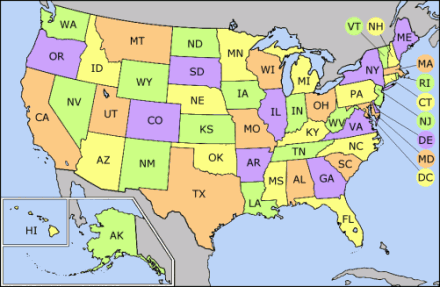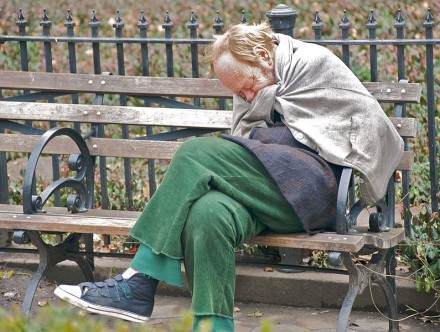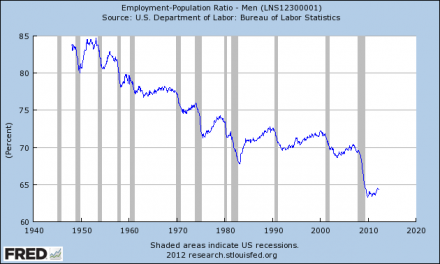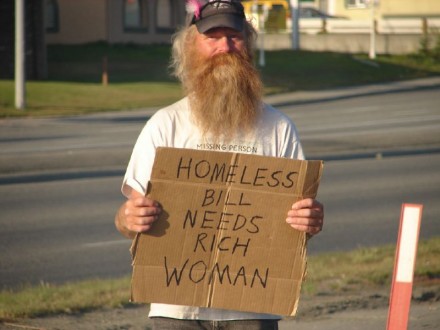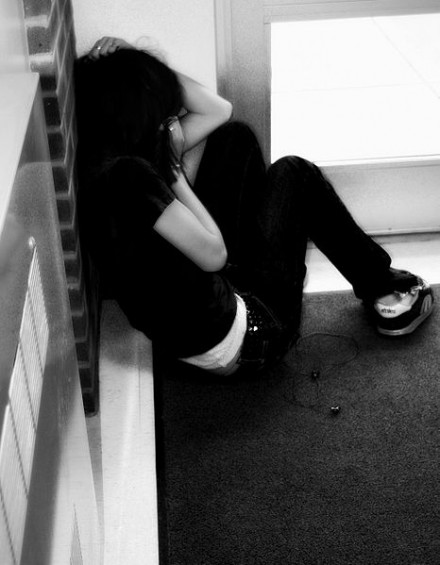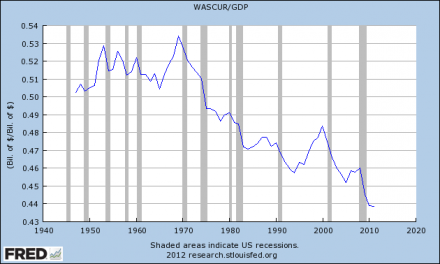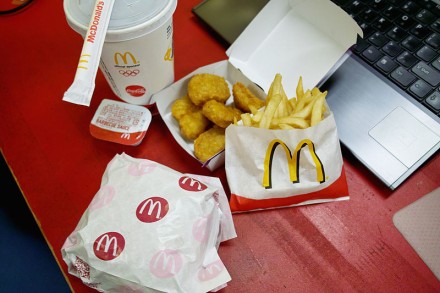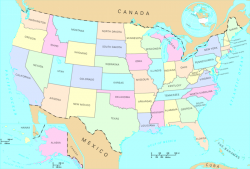 If you could live in any state in America, where would you go? During troubled times like these, what is the best place in the United States to live? A lot of people are asking these kinds of questions these days. Our economy is on the verge of collapse, natural disasters are becoming more frequent and more intense, the U.S. population is becoming angrier and more frustrated by the day, our government has become incredibly oppressive and controlling, war could break out at any time and evidence that society is breaking down is all around us. As our world becomes increasingly unstable, many families are considering moving somewhere else. But what areas are best and what areas should be avoided? Is there really a “best place to live” in America? Well, the truth is that each family is facing a different set of circumstances. If you have a great support system where you live, it can be really tough to pick up and move 3000 miles away from that support system. If you have a great job where you live now, it can be really tough to move some place where there may be no job at all for you. But without a doubt there are some areas of the country that will be far better off than others in the event of a major economic collapse. This article will take a look at each of the 50 U.S. states and will list some of the pros and cons for moving to each one.
If you could live in any state in America, where would you go? During troubled times like these, what is the best place in the United States to live? A lot of people are asking these kinds of questions these days. Our economy is on the verge of collapse, natural disasters are becoming more frequent and more intense, the U.S. population is becoming angrier and more frustrated by the day, our government has become incredibly oppressive and controlling, war could break out at any time and evidence that society is breaking down is all around us. As our world becomes increasingly unstable, many families are considering moving somewhere else. But what areas are best and what areas should be avoided? Is there really a “best place to live” in America? Well, the truth is that each family is facing a different set of circumstances. If you have a great support system where you live, it can be really tough to pick up and move 3000 miles away from that support system. If you have a great job where you live now, it can be really tough to move some place where there may be no job at all for you. But without a doubt there are some areas of the country that will be far better off than others in the event of a major economic collapse. This article will take a look at each of the 50 U.S. states and will list some of the pros and cons for moving to each one.
Not all of the factors listed below will be important to you, and a few have even been thrown in for humor. But if you are thinking of moving in the near future hopefully this list will give you some food for thought.
A few years ago when my wife and I were living near Washington D.C. we knew that we wanted a change and we went through this kind of a process. We literally evaluated areas from coast to coast. In the end, we found a place that is absolutely perfect for us. But different things are important to different people.
And if I gave your particular state a low rating, please don’t think that I am trashing the entire state or all of the people who live there.
For example, there are some absolutely wonderful people that live in the state of California, and there are some areas of California that I would not mind visiting at all. But for the times that are coming I am convinced that it is going to be a really bad place to live.
Not that I have all the answers either. Hopefully this article can get some debates started, and hopefully those debates will help people that are thinking of moving to another state to be more informed.
The following are some pros and cons for all 50 states….
Alabama
Pros: warm weather, southern hospitality, relatively low population density
Cons: hurricanes, tornadoes, crime, not enough jobs, multiple nuclear power plants, rampant poverty
Overall Rating: C+
Alaska
Pros: great fishing, lots of empty space, low population density, great for rugged individualists
Cons: very high cost of living, earthquakes, volcanoes, extremely cold, short growing season, too much snow, potentially cut off from supplies from the lower 48 states during an emergency situation
Overall Rating: B
Arizona
Pros: warm weather
Cons: illegal immigration, wildfires, return of dust bowl conditions, not enough jobs, not enough rain, multiple nuclear power plants, crime, gang violence, Phoenix
Overall Rating: D+
Arkansas
Pros: southern hospitality, warm weather, Ozark National Forest
Cons: tornadoes, Clintons, New Madrid fault zone, multiple nuclear power plants, crime, rampant poverty
Overall Rating: C
California
Pros: Disneyland, warm weather, Malibu
Cons: high taxes, Jerry Brown, earthquakes, mudslides, wildfires, gang violence, crime, traffic, rampant poverty, insane politicians, ridiculous regulations, bad schools, political correctness, illegal immigration, not enough jobs, air pollution, multiple nuclear power plants, possible tsunami threat along the coast, Los Angeles, San Francisco, Oakland, Stockton, Sacramento, huge drug problem, high population density, the state government is broke, many more reasons to leave California right here
Overall Rating: F
Colorado
Pros: Rocky Mountains, Colorado Springs
Cons: wildfires, illegal immigration, short growing season, not enough rain, too much snow, huge drug problem
Overall Rating: B
Connecticut
Pros: beautiful homes
Cons: high taxes, insane politicians, ridiculous regulations, political correctness, short growing season, multiple nuclear power plants, high population density
Overall Rating: C-
Delaware
Pros: good fishing
Cons: Joe Biden, political correctness, ridiculous regulations, insane politicians, crime, high population density
Overall Rating: D
Florida
Pros: University of Florida Gators, oranges, low taxes, southern hospitality, Disneyworld, Gainesville, warm weather, beautiful beaches, Daytona
Cons: hurricanes, most of the state is barely above sea level, high population density, not enough jobs, multiple nuclear power plants, crime, gang violence, illegal immigration
Overall Rating: C
Georgia
Pros: peaches, southern hospitality, warm weather
Cons: not enough jobs, multiple nuclear power plants, crime, gang violence, flesh eating disease, Atlanta
Overall Rating: B-
Hawaii
Pros: awesome beaches, warm weather, great vacation destination
Cons: vulnerable to tsunamis, very high cost of living, volcanoes, traffic, high population density, high taxes
Overall Rating: C-
Idaho
Pros: awesome people live there, great potatoes, low population density, high concentration of liberty-minded individuals, low crime, Sandpoint, Coeur d’Alene, north Idaho has plenty of water compared to the rest of the interior West, beautiful scenery
Cons: cold in the winter, wildfires, short growing season, not enough jobs
Overall Rating: A
Illinois
Pros: once you get away from Chicago things are not quite so bad
Cons: Barack Obama, drought, New Madrid fault zone, high population density, political correctness, ridiculous regulations, insane politicians, crime, gang violence, Chicago, East St. Louis, not enough jobs, multiple nuclear power plants, mob robberies, the state government is drowning in debt
Overall Rating: D-
Indiana
Pros: it is in better shape than Illinois, good farming, high Amish population
Cons: drought, tornadoes, the city of Gary, relatively high population density, near the New Madrid fault zone, a “rust belt” state
Overall Rating: C-
Iowa
Pros: low population density, low crime, good farming
Cons: drought, tornadoes, cold in the winter, multiple nuclear power plants, too much snow, very flat
Overall Rating: B-
Kansas
Pros: low population density, low crime, good farming
Cons: drought, tornadoes, return of dust bowl conditions, very flat
Overall Rating: B
Kentucky
Pros: southern hospitality, great horses, Lexington
Cons: New Madrid fault zone, not enough jobs, rampant poverty, Louisville
Overall Rating: C
Louisiana
Pros: southern hospitality, warm weather
Cons: hurricanes, New Orleans, not enough jobs, tornadoes, multiple nuclear power plants, oil spills, crime, gang violence, rampant poverty
Overall Rating: D
Maine
Pros: low population density, low crime, polite people
Cons: extremely cold, short growing season, political correctness, ridiculous regulations, insane politicians, too much snow
Overall Rating: B-
Maryland
Pros: the Washington Redskins play there
Cons: Baltimore, borders Washington D.C., high population density, really bad traffic, political correctness, ridiculous regulations, insane politicians, multiple nuclear power plants, crime, gang violence
Overall Rating: C-
Massachusetts
Pros: beautiful homes
Cons: high taxes, political correctness, ridiculous regulations, insane politicians, high population density, short growing season, almost everything is illegal in Massachusetts
Overall Rating: D+
Michigan
Pros: once you get away from Detroit and Flint things get better
Cons: Detroit, Flint, Dearborn, extremely cold, short growing season, political correctness, ridiculous regulations, insane politicians, not enough jobs, multiple nuclear power plants, too much snow, a “rust belt” state
Overall Rating: D-
Minnesota
Pros: land of 10,000 lakes
Cons: extremely cold, short growing season, multiple nuclear power plants, too much snow, high taxes
Overall Rating: C
Mississippi
Pros: southern hospitality, relatively low population density, warm weather
Cons: hurricanes, tornadoes, not enough jobs, rampant poverty, crime
Overall Rating: C+
Missouri
Pros: good farming, Branson
Cons: drought, tornadoes, New Madrid fault zone, not enough jobs, crime
Overall Rating: C
Montana
Pros: low population density, low taxes, high concentration of liberty-minded individuals, Missoula, Kalispell
Cons: extremely cold in the winter, wildfires, short growing season, not enough rain, near Yellowstone super volcano, rampant poverty, too much snow
Overall Rating: B+
Nebraska
Pros: low population density, good farming
Cons: tornadoes, drought, multiple nuclear power plants, cold in the winter, very flat
Overall Rating: B
Nevada
Pros: low population density, lots of empty space, low taxes, warm weather
Cons: Harry Reid, Las Vegas, Reno, not enough water, not enough rain, wildfires, hard to grow food, not enough jobs, crime, gang violence, huge drug problem, Yucca Mountain
Overall Rating: D+
New Hampshire
Pros: low crime, beautiful homes
Cons: extremely cold, short growing season, political correctness, ridiculous regulations, insane politicians, too much snow
Overall Rating: C
New Jersey
Pros: anyone got something?
Cons: high population density, Camden, Newark, not enough jobs, multiple nuclear power plants, Atlantic City, crime, gang violence
Overall Rating: D-
New Mexico
Pros: low population density, warm weather
Cons: illegal immigration, wildfires, return of dust bowl conditions, not enough jobs, not enough rain, crime, gang violence, huge drug problem
Overall Rating: C-
New York
Pros: the entire state is not like New York City
Cons: New York City, Mayor Bloomberg, high taxes, cold in the winter, high population density, political correctness, ridiculous regulations, insane politicians, not enough jobs, multiple nuclear power plants, the “too big to fail” banks
Overall Rating: D
North Carolina
Pros: southern hospitality, warm weather, Great Smoky Mountains National Park
Cons: hurricanes, not enough jobs, multiple nuclear power plants
Overall Rating: B
North Dakota
Pros: low crime, lots of oil-related jobs, low population density
Cons: extremely cold, short growing season, too much snow
Overall Rating: B
Ohio
Pros: the Cincinnati Reds, the Pro Football Hall of Fame, high Amish population
Cons: not enough jobs, cold in the winter, multiple nuclear power plants, high population density, Toledo, Cleveland, a “rust belt” state
Overall Rating: C
Oklahoma
Pros: warm weather, good farming
Cons: drought, tornadoes, wildfires, return of dust bowl conditions, not enough rain, crime, Oklahoma City, rampant poverty
Overall Rating: C
Oregon
Pros: tremendous natural beauty
Cons: high taxes, Portland, political correctness, ridiculous regulations, insane politicians, not enough jobs, huge drug problem, possible tsunami threat along the coast
Overall Rating: C-
Pennsylvania
Pros: high Amish population
Cons: high population density, Philadelphia, Pittsburgh, not enough jobs, multiple nuclear power plants, a “rust belt” state
Overall Rating: C
Rhode Island
Pros: so small that most people don’t notice their problems
Cons: the state is flat broke, short growing season, political correctness, ridiculous regulations, insane politicians, not enough jobs, high population density
Overall Rating: D+
South Carolina
Pros: southern hospitality, warm weather, Myrtle Beach
Cons: hurricanes, not enough jobs, multiple nuclear power plants, crime, gang violence, rampant poverty
Overall Rating: B
South Dakota
Pros: low population density, fun tourist traps, the Badlands, Mount Rushmore
Cons: extremely cold, short growing season, very flat, too much snow
Overall Rating: B
Tennessee
Pros: Nashville, Michael W. Smith, southern hospitality, warm weather, Gatlinburg
Cons: Memphis, New Madrid fault zone, multiple nuclear power plants, crime, gang violence, rampant poverty
Overall Rating: B-
Texas
Pros: low taxes, warm weather, Austin
Cons: drought, illegal immigration, tornadoes, wildfires, West Nile Virus, the Dallas Cowboys, return of dust bowl conditions, speed traps, not enough rain, multiple nuclear power plants, George W. Bush, crime
Overall Rating: B-
Utah
Pros: beautiful mountains, low crime, low population density
Cons: cold in the winter, wildfires, Salt Lake City, short growing season, not enough rain, illegal to collect rain
Overall Rating: B-
Vermont
Pros: low crime, beautiful homes
Cons: cold in the winter, insane politicians, ridiculous regulations, short growing season, political correctness, not enough jobs, too much snow
Overall Rating: C
Virginia
Pros: the University of Virginia, southern hospitality, Charlottesville
Cons: borders Washington D.C., high population density, multiple nuclear power plants, Richmond, really bad traffic in northern Virginia
Overall Rating: B-
Washington
Pros: the eastern half of the state is quite nice and much different from the coast
Cons: way too much rain along the coast, volcanoes, wildfires, insane politicians, ridiculous regulations, political correctness, not enough jobs, possible tsunami threat along the coast, Seattle
Overall Rating: C
West Virginia
Pros: beautiful mountains
Cons: not enough jobs, rampant poverty
Overall Rating: B
Wisconsin
Pros: cheese, the Green Bay Packers
Cons: extremely cold, short growing season, multiple nuclear power plants, too much snow,
Overall Rating: B-
Wyoming
Pros: low population density, lots of empty space, low taxes
Cons: extremely cold, too windy, too flat, wildfires, short growing season, not enough rain, Yellowstone super volcano
Overall Rating: B-
What do you think of these rankings?
What do you think is the best place to live in America?
Do you have any additional pros and cons that should be added to this list?
Please feel free to post a comment with your thoughts below….
